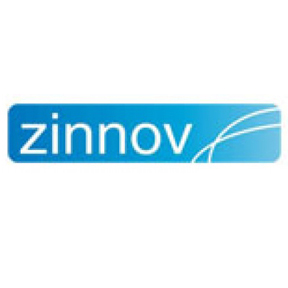 Zinnov Management Consulting, a leading Globalization and Market Expansion Advisory firm, launched its much awaited Rating of Global R&D Service Providers’ across geographies. The study titled “Global R&D Service Providers (GSPR) Rating 2013”, is an annual study to assist business leaders spearheading global engineering initiatives make right decisions in partner selection across geographies.
Zinnov Management Consulting, a leading Globalization and Market Expansion Advisory firm, launched its much awaited Rating of Global R&D Service Providers’ across geographies. The study titled “Global R&D Service Providers (GSPR) Rating 2013”, is an annual study to assist business leaders spearheading global engineering initiatives make right decisions in partner selection across geographies.
According to the Study, the Indian service providers have clearly emerged as the leaders and soon India will have a USD 1 Billion Product Engineering Services player in the market. The service providers can be broadly classified into three groups. First group is Wipro, HCL, TCS, Tech Mahindra and Infosys, which has a significantly large product engineering practice and amongst them they cover most of the outsourced R&D activity. The second set of leaders include companies like iGATE, L&T TS, Infotech, Mindtree and Symphony Teleca that continue to expand their coverage across verticals and are transforming to take on a larger play across all the verticals. The third category is a set of niche leaders like Aricent, KPIT Cummins, Persistent, Sasken, eInfochips, Quest Global, Tata Elxsi and Tata Technologies. This makes the Indian supplier landscape a diverse and mature market place for companies that are looking to source product engineering services.
All participating companies have been assessed on parameters like Human capital, product development capabilities, financials, ecosystem linkages, infrastructure & innovation / IP creation, their non-linear strategy, lab infrastructure and customer relationships. TCS has the most expansive service offering across all the verticals. Wipro and HCL being heritage engineering and R&D service providers, they have deep and strong capabilities in this space. Tech Mahindra has emerged as a strong player in this segment with strong eco-system support from the engineering capabilities of the Mahindra group and erstwhile Mahindra Satyam. Infosys is strengthening and growing its presence in areas like Semiconductor and Electronics and notably its strong training engine for Engineering R&D gives it a definite edge. The niche leaders continue to enjoy a dominant position in their respective verticals of operation and have considerably increased the non-linear revenue as a percentage of overall revenue.
Overall from an operations perspective, attrition has remained stable at around 14% in this segment and the companies have been able to sustain the pricing pressures and retain the billing rates. There has been a significant uptake in terms of alternate pricing models like risk reward and revenue share and the service providers are now proactively approaching customers with these new business models. Since the last year, the service providers have significantly invested in lab infrastructure; the Indian service providers alone have invested over 25 Million USD in lab infrastructure. itvoice.
In terms of verticals, niche service providers continue to retain their dominant position. Niche service providers have a better focus on the non-linear strategy and are beginning to see good traction in terms of the revenue from non-linear strategies. More than 30% of the overall deals signed in the engineering services segment have had a solution component incorporated in it and clearly there is a clear shift from the traditional professional services model to a solution augmented model. The European service providers in the product engineering space like Capgemini, Altran, Safran, Alten, AS System are now starting to leverage the Global Delivery Model and this trend will soon put tremendous pressure on the India centric service providers who have long enjoyed the labor arbitrage.
The Indian engineering services segment witnessed fewer M&A activity as compared to the global marketplace – The drivers for acquisition are very different for global players as compared to India centric companies. In the European market, the driver for acquisitions was – consolidation, whereas for Indian centric companies the need for acquisition was driven by onshore presence and capability augmentation. For example, Tata Technologies acquired Cambric in the Construction and Heavy Engineering space to augment its capabilities in a high growth vertical and gain a near shore presence to serve the European market.
The engineering services segment is at an inflection point with significant shifts in business models, increased demand for solutions and globalization driving up the competition amongst global players.
To take on the new challenges and continue to grow at a rapid pace, the engineering service providers need to look at whitespaces and start investing in them now. One such opportunity that Zinnov’s sees is in the space of “Engineering Analytics” – it is expected that global companies will spend over USD 27 Billion on Engineering Analytics and the addressable opportunity for service providers is quite sizable. Especially activities around building the analytics infrastructure, engineering the systems and machines to enable data capture for further processing and analytics services are the key opportunity areas.
Commenting on the study, Sundararaman Viswanathan, Manager-Consulting, Zinnov, said, “There are several new opportunities for service providers to take advantage of, such as engineering analytics, which presents significant potential for growth. We are seeing a trend of solution strategy increasingly becoming a major component in majority of the deals, as service providers are building solutions to demonstrate competency, enhance product quality and reduce time to market across sectors.






